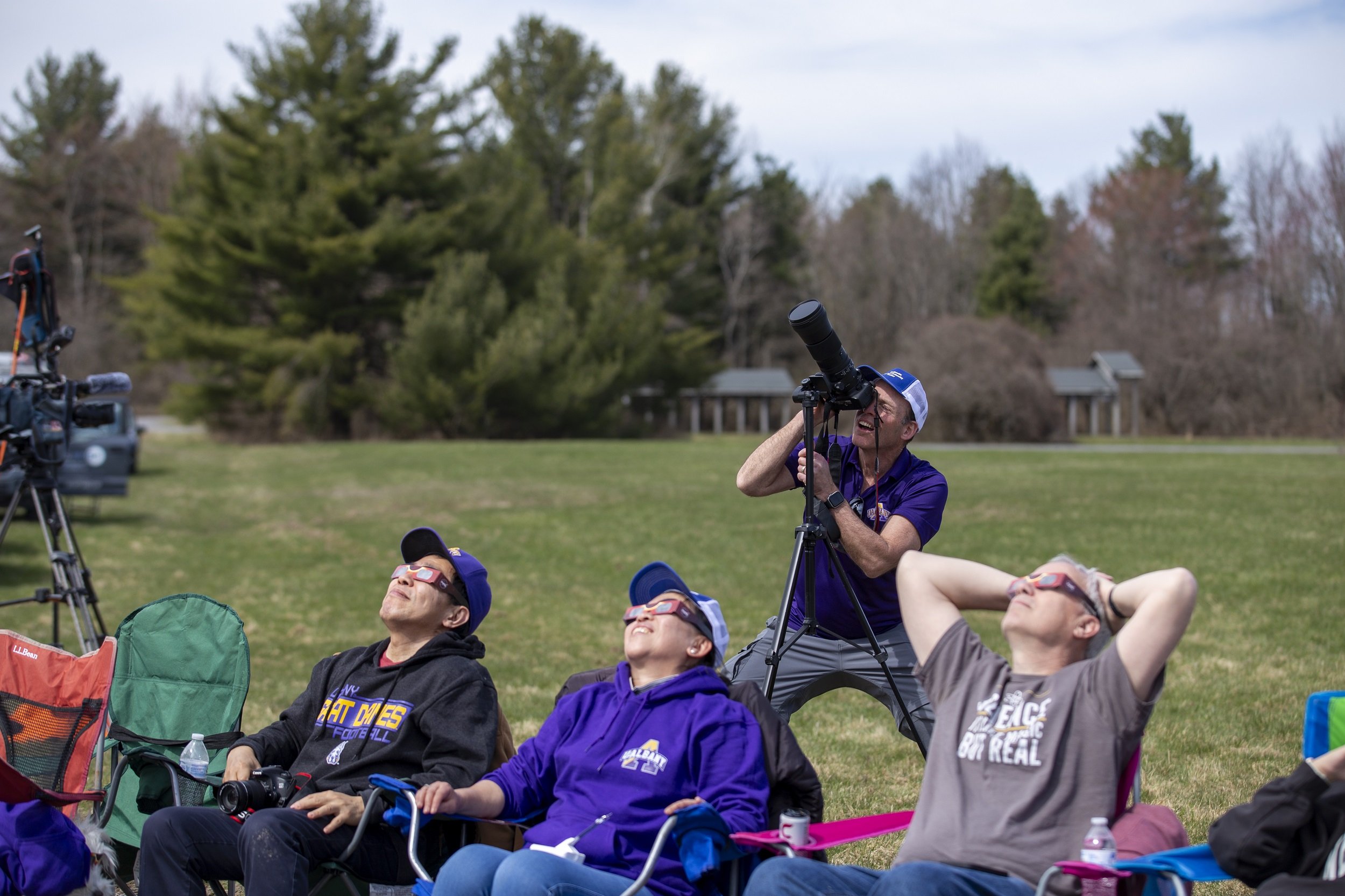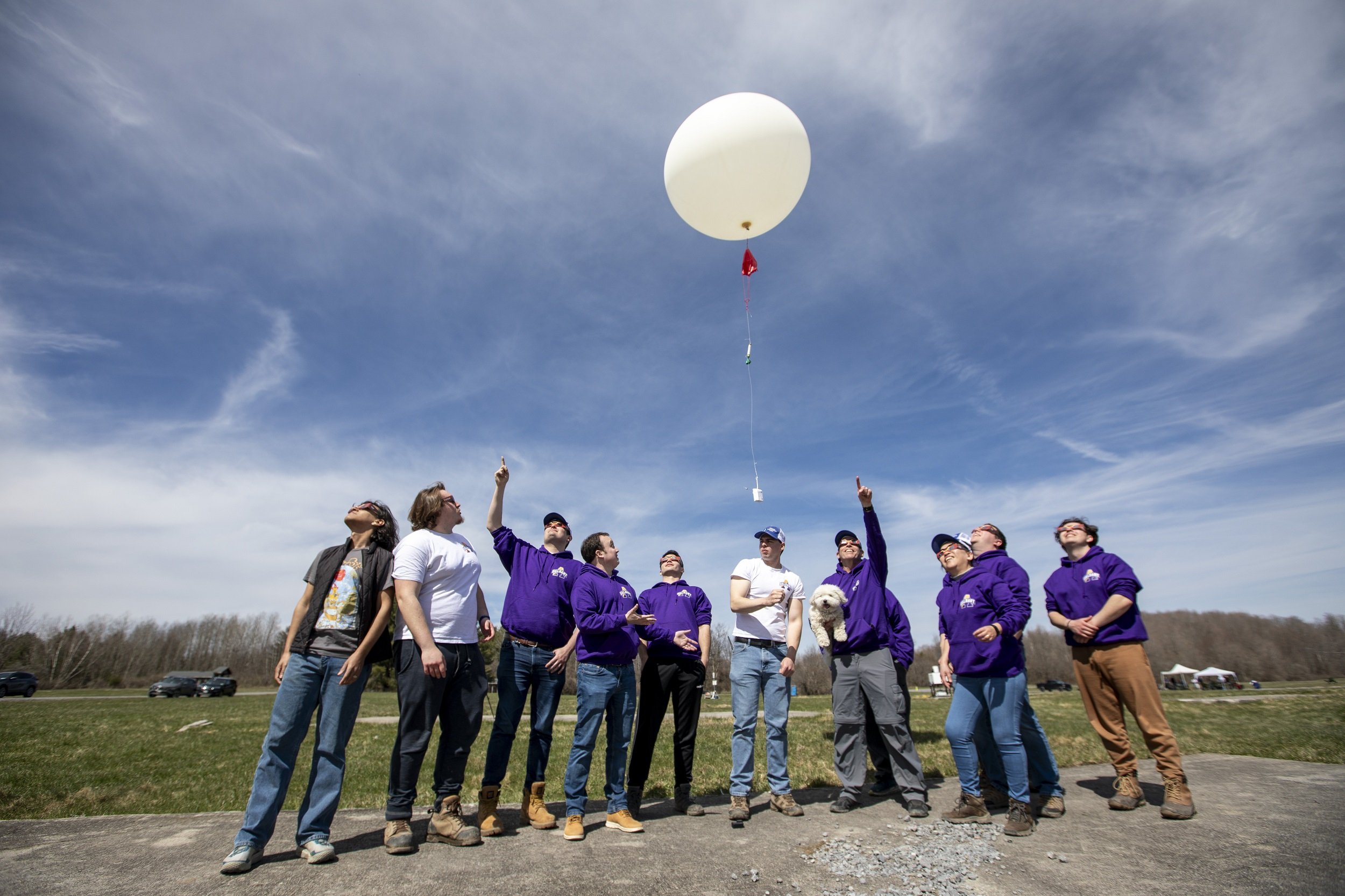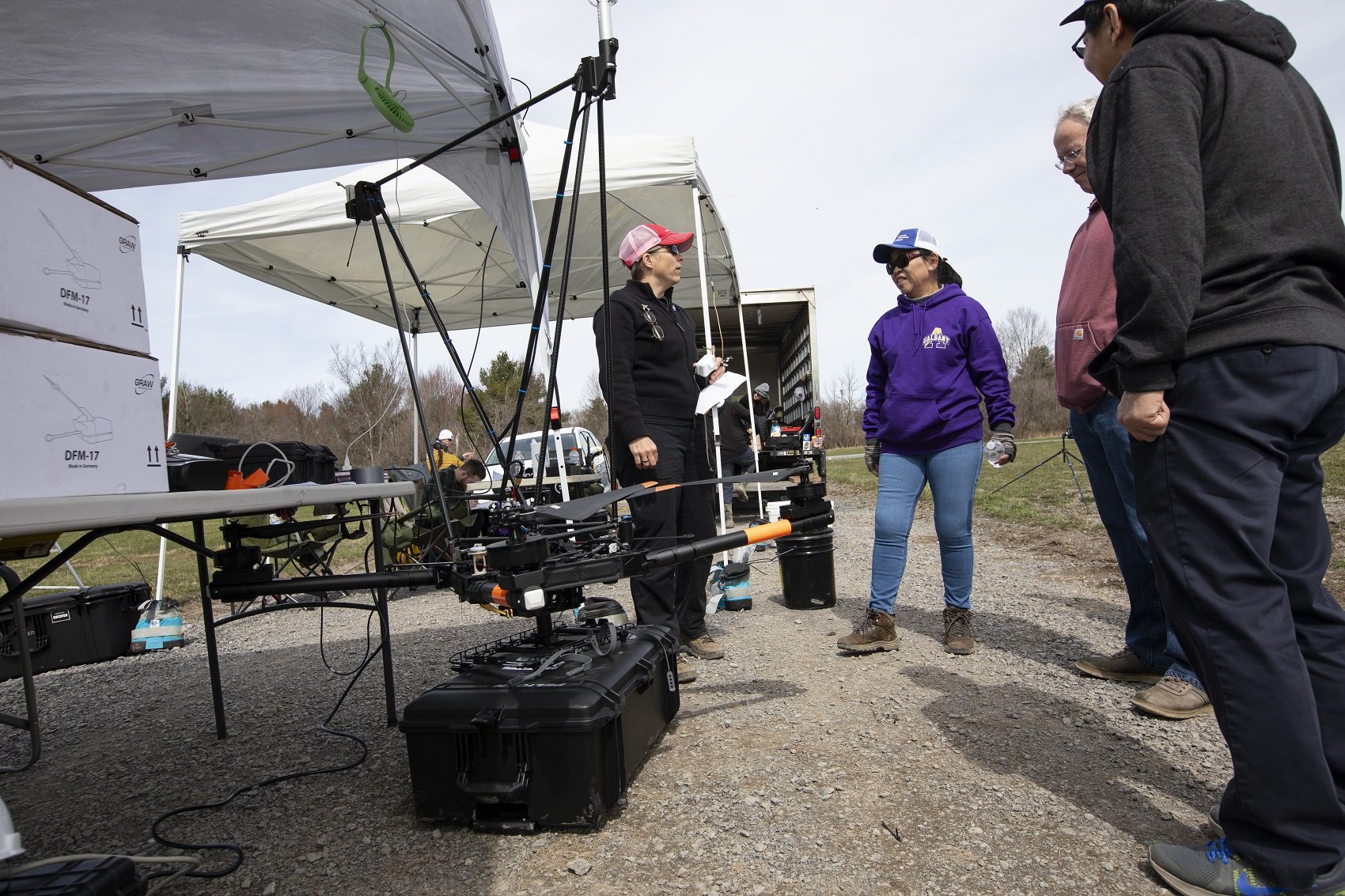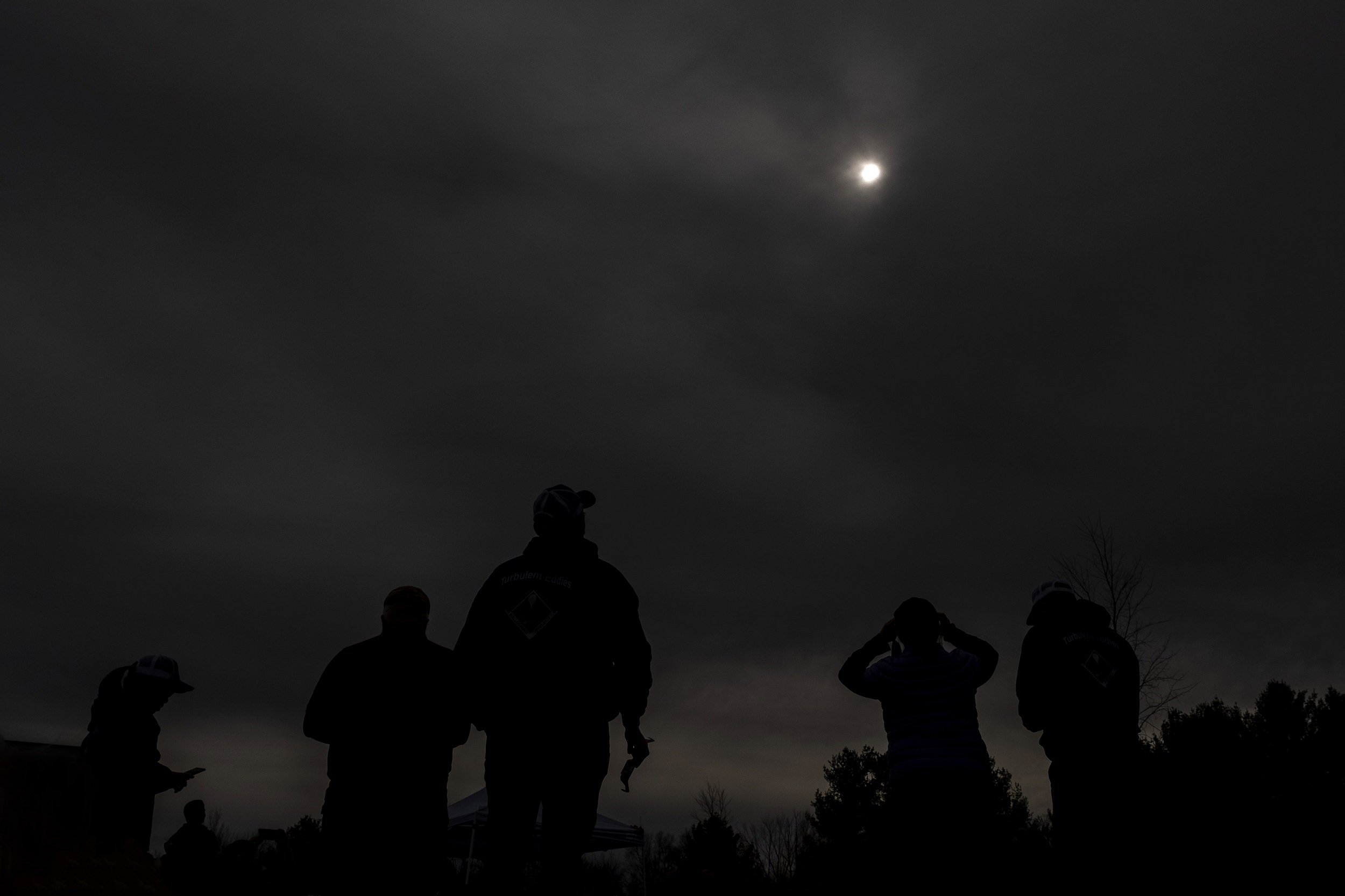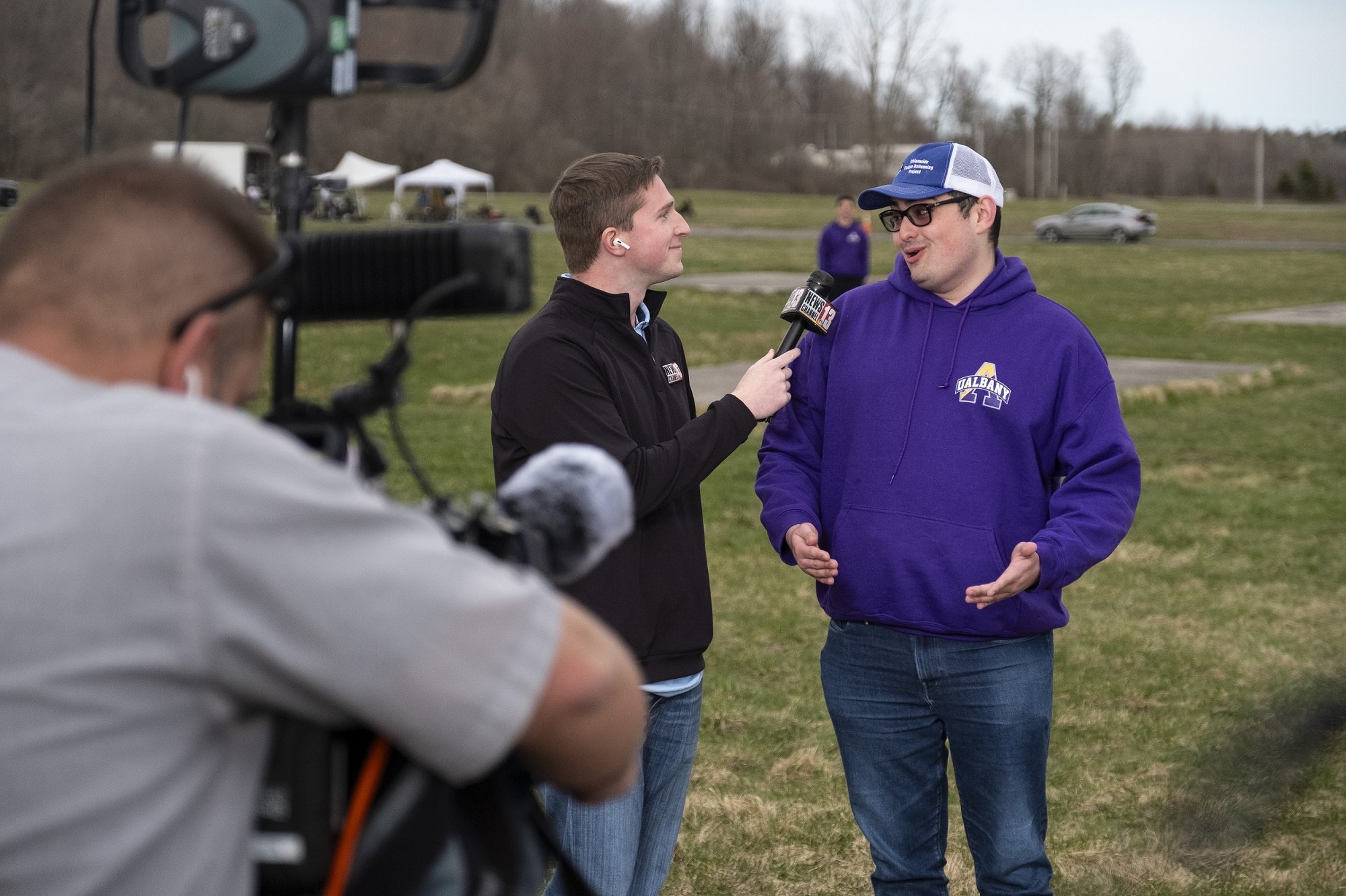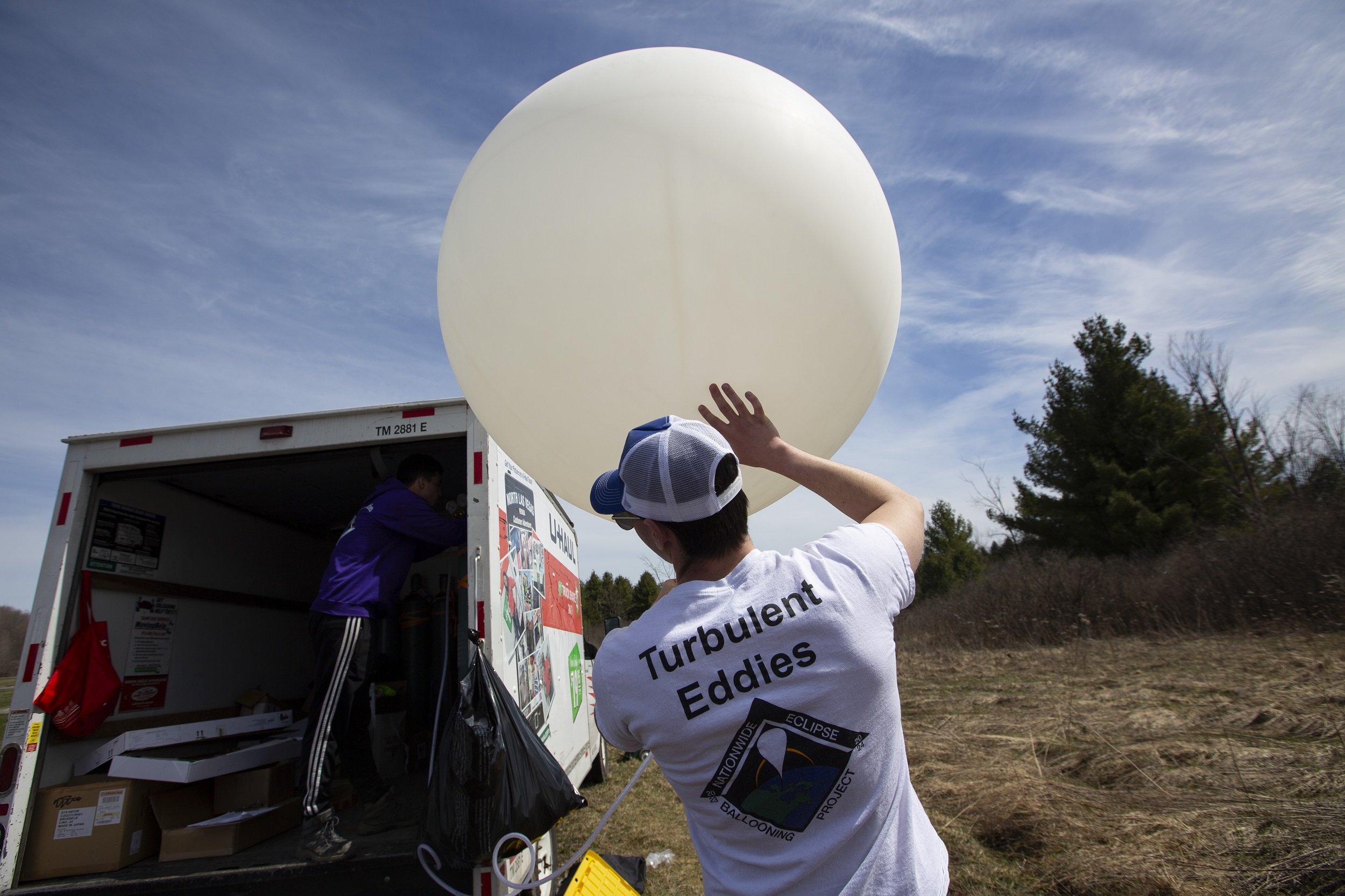UAlbany Students Experience Totality Through NASA Eclipse Ballooning Project
By Mike Nolan
ALBANY, N.Y. (April 23, 2024) — Evan Belkin spent more than a year preparing for totality on April 8.
Belkin, a senior in the Department of Atmospheric and Environmental Sciences at the College of Arts and Sciences was among nine UAlbany undergraduate students that participated in NASA’s 2023-24 Nationwide Eclipse Ballooning Project.
The Nationwide Eclipse Ballooning Project, which included 53 student teams from 75 institutions, took advantage of the Oct. 14, 2023, annular eclipse — where the outer edge of the sun remains visible — and the April 8 total solar eclipse, launching weather balloons from locations on the totality path across the U.S. to collect and analyze atmospheric data.
On April 8, a half dozen students from UAlbany’s team, the “Turbulent Eddies,” were stationed in a remote field on the edge of the Fort Drum, N.Y. military base. The students took shifts launching weather balloons each hour for 30 consecutive hours along the eclipse path.
Totality, the moment when the moon completely covers the sun's face, started at 3:24 p.m. and lasted for three minutes and 37 seconds.
“What we just experienced, it was wicked cool,” said Belkin, still gazing into the sky shortly after totality ended. “Unfortunately, there were a lot of clouds today. But we felt a significant temperature drop and it turned to complete darkness. It’s awesome to be here surrounded by my professors, faculty and friends. The hard work paid off.”
Scientific Weather Balloons
Weather balloons offer a wide range of atmospheric data that help improve forecast models such as pressure, temperature, relative humidity, and wind speed and direction.
During flights, data is collected and transmitted in real time to a ground computer through a small, expendable instrument package, called a radiosonde, that is attached to the helium-filled balloon. Each flight lasts around two hours, during which the balloon drifts up to 125 miles and can reach an altitude of 115,000 feet.
While it is known that the Earth’s surface experiences dramatic cooling during a total solar eclipse, there are still many unknowns about how these rare cosmic events influence our atmosphere.
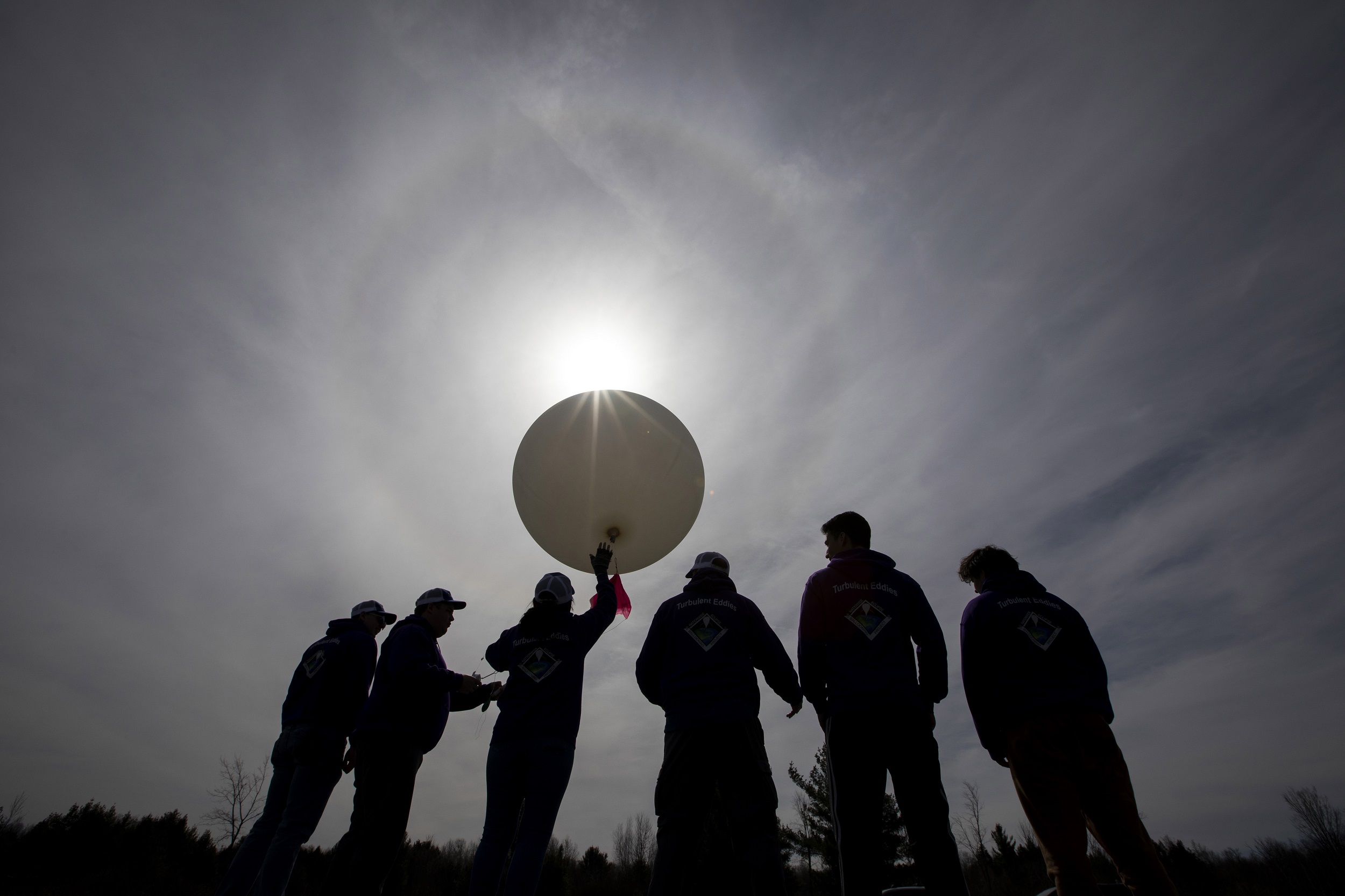
“This is the first total solar eclipse to cross New York State since 1925 and the next will not be until 2079,” said Jeff Freedman, a researcher at UAlbany’s Atmospheric Sciences Research Center and faculty mentor for the project. “It offers a unique opportunity to observe what happens to the weather in the middle of the day when you turn off the sun. From the balloon data, we’ll be able to have a better idea of what happened before, during and after the eclipse, and compare our observations to participating student teams around the country.”
Freedman, along with four other UAlbany mentors including New York State Mesonet Director June Wang, Justin Minder, an associate professor in the Department of Atmospheric and Environmental Sciences, Bhupal Shrestha, a senior research support specialist at the NYS Mesonet, and Troy Zaremba, a postdoctoral researcher, had worked with the student team since January 2023 to prepare them for both eclipse events.
The students traveled to New Mexico for October’s annular eclipse.
“How many students get the opportunity to be out in the field and launch radiosondes during a total solar eclipse?” said David Zywiczynski, a senior in the Department of Atmospheric and Environmental Sciences and member of the Turbulent Eddies. “It’s been an amazing experience, and more importantly, will offer new information that gives us more of an understanding of these events.”
Gathering More Eclipse Data
UAlbany’s weather balloons were not the only data collected at Fort Drum during the total solar eclipse. Researchers from NASA’s Langley Research Center were also on site, flying drones specifically modified to collect atmospheric measurements up to 10,000 feet before, during and after the eclipse to measure meteorological differences.
“This is a known event. We know that the energy coming from the sun is going to turn off. That’s important when you think about a volcanic eruption or wildfire smoke settling into a town. It’s going to change the forecast,” said Jennifer Fowler, the center range flight safety lead at NASA’s Langley Research Center, who was leading drone operations at Fort Drum. “This is a perfect time to model that, when we know we’re going to have a decrease in solar radiance.”
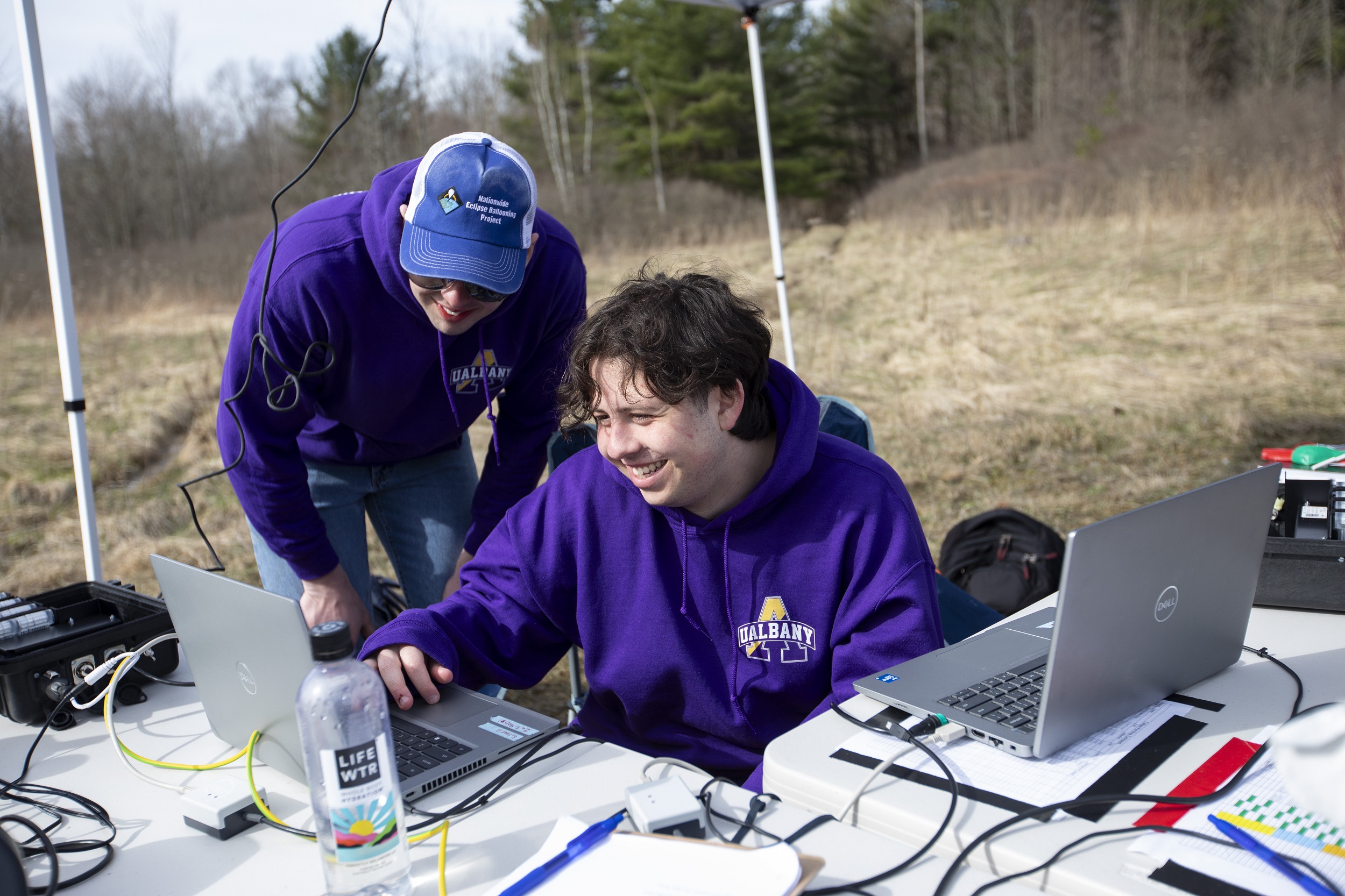
Back at UAlbany, another three students were launching weather balloons every 30 minutes during the afternoon of the total solar eclipse day from the ETEC yard, along with drone launches by GreenSight, part of the National Science Foundation (NSF)-sponsored eclipse field project led by NYS Mesonet Director June Wang and NSF National Center for Atmospheric Research (NCAR) Senior Scientist Tammy Weckwerth.
The NYS Mesonet, a statewide weather observation network operated by UAlbany, was collecting weather data in real time during the eclipse as well, including from 55 sites in the path of totality. Three Mesonet sites (Webster, Chazy and Albany) had MicroPulse DIAL (MPD) LiDARs installed by NCAR to collect atmospheric data from April 1 to 30. Meteorological drones were launched at the Webster site on April 7 and 8. All as part of the NSF eclipse field project.
"This event offered an ideal testing laboratory to understand the meteorological, ecological, photochemical, and biological responses to an eclipse,” said Wang. “We took full advantage, collecting meteorological data both on the ground and in the atmosphere.”
Balloon Launch Observations
Now that the balloon launches are complete, the next step is to analyze the observations.
The students will be presenting a preliminary analysis at UAlbany Showcase on April 30, which brings together the entire University community to highlight the academic excellence of students through their research, scholarship, creative activities and experiential learning.
“The solar eclipse has always been a bucket list item, so to pair it with doing field work like this was a pretty easy decision,” said Alan Birnbaum, a senior in the Department of Atmospheric and Environmental Sciences, who traveled to Fort Drum. “The next step is data analysis, which will be a long process. We’ll eventually publish results in peer-reviewed journals.”
The next total solar eclipse will visit our planet on Aug. 12, 2026, in northwestern Europe. Although it technically makes landfall in a remote corner of Russia, the majority of people who witness totality will do so from Greenland, Iceland and Spain.
View media coverage of UAlbany’s Turbulent Eddies, including live shots at Fort Drum by WNYT meteorologist Reid Kisselback ’17.





